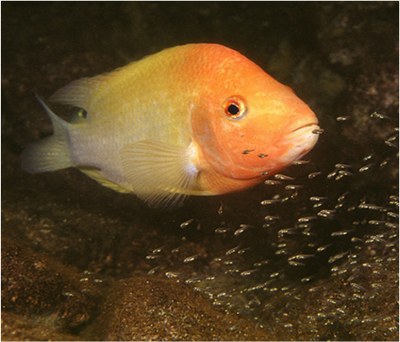Breeding and Mating Tactics
ABEL is actively involved in studies aimed to better understand the evolution of parental behaviour, sexual selection and breeding/mating systems. In general, we are exploring these complex breeding and mating behaviours in the light of evolutionary and ecological theory. To do so, we combine long term field studies of life-history, population biology and ecology with more mechanistic analyses focused on extrapair paternity, hormone analysis, energetics, sperm physiology or neurophysiology. Our study organisms are varied (various fish, and bird species but also humans).
Many of the species we study have male alternative reproductive tactics (or MARTS), where there are at least two types of males. In these species, there are the conventional males that do the regular male thing (defending a territory, courting a female, and in some species looking after the young). But then there are other males that do none of these things. These alternative males are called sneakers or cuckolders because they simply dash in and shed their sperm, effectively parasitizing the efforts of the conventional males. In our lab, we explore the physiological and behavioural consequences of such alternative male tactics. We try to understand why such different male tactics exist, how successful the tactics are and why the frequency of tactics varies over space and time. In the last few years we have become interested in the role that contaminants have on the prevalence and development of two male alternative reproductive tactics.
 See the Photo Gallery of ABEL work on this topic
See the Photo Gallery of ABEL work on this topic
Here are a few representative ABEL papers on this topic:
-
Cogliati, KM, Neff, BD, and Balshine, S, 2013. "High degree of paternity loss in a species with alternative reproductive tactics". Behavioral Ecology and Sociobiology, 67(3), 399-408
-
Wong, MYL, Jordan, LA, Marsh-Rollo, S, St-Cyr, S, Reynolds, JO, Stiver, KA, Desjardins, JK, Fitzpatrick, JL, and Balshine, S, 2012. "Mating systems in cooperative breeders: the roles of resource dispersion and conflict mitigation". Behavioral Ecology, 23(3), 521-530
-
Fitzpatrick, JL, Montgomerie, R, Desjardins, JK, Stiver, KA, Kolm, N, and Balshine, S, 2009. "Female promiscuity promotes the evolution of faster sperm in cichlid fishes". Proceedings of the National Academy of Sciences of the United States of America, 106(4), 1128-1132
-
Desjardins, JK, Fitzpatrick, JL, Stiver, KA, Van der Kraak, GJ, and Balshine, S, 2008. "Costs and benefits of polygyny in the cichlid Neolamprologus pulcher". Animal Behaviour, 75, 1771-1779
-
Fitzpatrick, JL, Desjardins, JK, Milligan, N, Montgomerie, R, and Balshine, S, 2007. "Reproductive-tactic-specific variation in sperm swimming speeds in a shell-brooding cichlid". Biology of Reproduction, 77(2), 280-284

